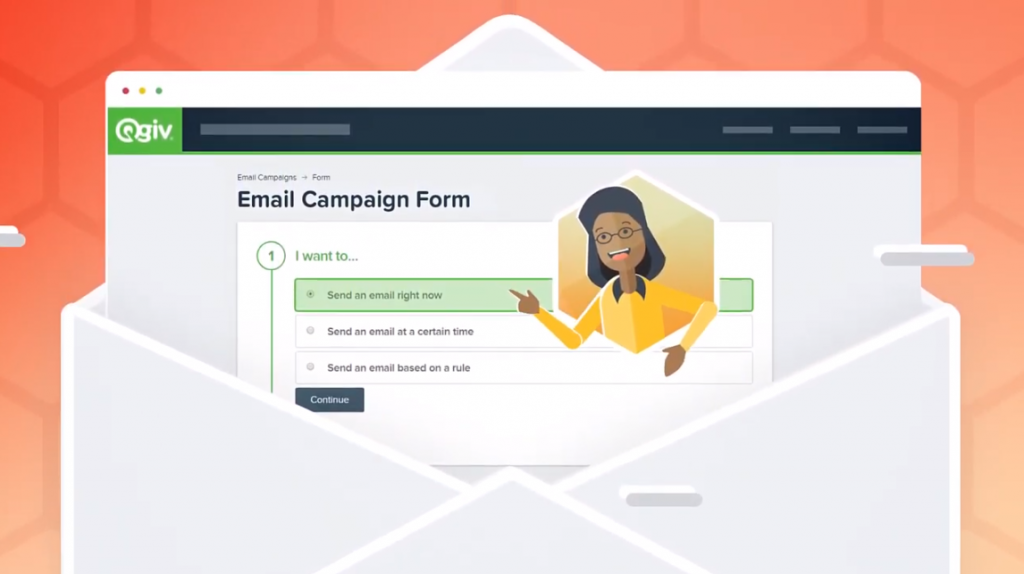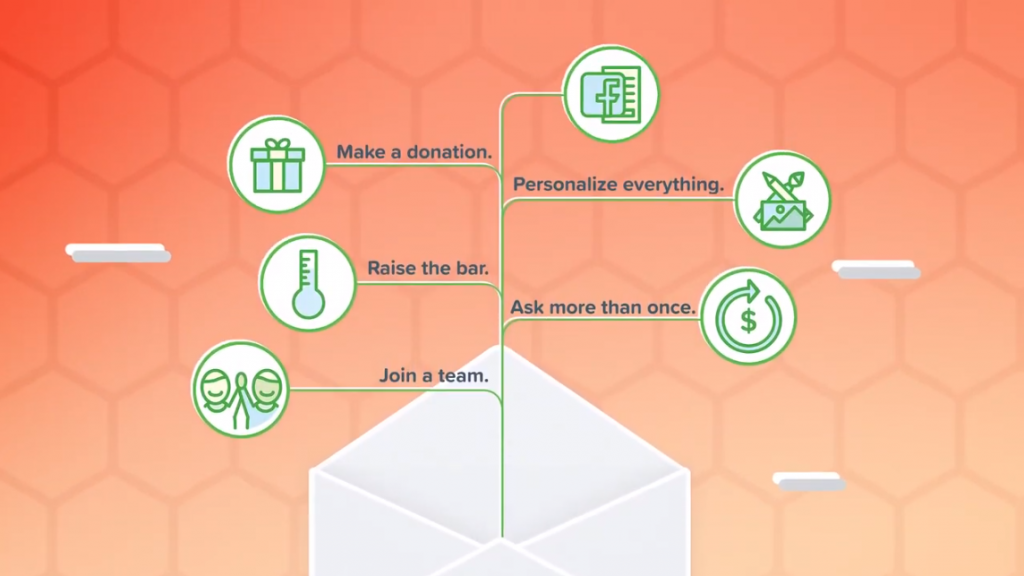Does this sound familiar? You plan a fun peer-to-peer event, recruit teams of participants, and set their fundraising goal. Then the day of the event comes, and no one’s raised anything! It’s frustrating, right?
Luckily, there’s a cheap, easy, and efficient way to encourage your peer-to-peer participants to fundraise on your behalf. Email them!

Email 1: How to raise money
The first email in your email campaign should thank participants for registering for your event. Then, for all individuals and teams signed up as fundraisers, share tips and tricks that make fundraising easier. This participant welcome packet can provide instructions for how teams can host their own mini fundraisers, how to ask different members of their social circles to donate to their team, and instructions for how to set up their own fundraising pages and Facebook fundraisers.
Save your fundraisers time by linking to or attaching templates for fundraising appeal and thank-you letters in this email. Your supporters won’t have to question how to word their requests for support and they’ll have a well-written appeal letter featuring your organization’s branding.
Offer to support your fundraisers and give them a phone number or email to use if they have questions or want advice. Your goal is to empower your supporters to step out of their comfort zones and fundraise with confidence. Confident requests for donations will make your supporters’ friends, families, and coworkers more receptive of requests for support.
Email 2: Incentivize fundraising
After sending the first email in the series, monitor each team’s fundraising activity. Are they on track to hit their goals, or do they need a little push to get them going? Either way, incentivizing fundraising gives your supporters more motivation to reach fundraising goals.
For instance, is there an award for the top fundraising team/participant? Let supporters know the award’s up for grabs—especially if your event caters to a more competitive crowd.
You can also offer rewards for passing fundraising milestones. Just let your supporters know how much they need to raise for each prize. If fundraising dollars translate into raffle tickets for a prize drawing, let them know what the grand prize is.
If you’re celebrating fundraising milestones in other fun ways, communicate them! For instance, Qgiv has badges for peer-to-peer fundraising events. There are different badges for different fundraising milestones. This includes the top fundraising badge, which can be won and lost as supporters raise more money. You can also create your own badges to recognize other milestones you want your participants to reach. However, even if you don’t have physical incentives to give away, you can incentivize fundraising by relating different dollar amounts with different services your nonprofit can provide as a result. The biggest incentive should be the knowledge your participants are making the world a better place by supporting you.
Email 3: Mentor under-performing participants
The next email in the email series is targeted toward teams or participants that are falling behind the others. These are folks who may need more one-on-one attention to ramp up their fundraising. In this email you want to be encouraging, friendly, and helpful.
Offer to set up a meeting with their team to train them on fundraising and answer their questions personally. You could also invite these under-performing supporters to take part in a scheduled peer-to-peer fundraising seminar. Offer them tips, tricks, and resources to make fundraising easier. Plan the seminar for a weekend day and limit the duration to an hour. Your supporters will likely be willing to give up an hour of their Saturday to learn how to best help you.
Finally, let your supporters know how much you appreciate their efforts and show them you’re there to help.
Email 4: Spark some healthy competition
Are your top fundraisers neck-and-neck in the race toward their fundraising goals, or has one supporter been dominating the field the entire time? Either way, a well-timed email encouraging your supporters to fight to be top dog can really spur your teams to new heights. Dispel feelings of discouragement by letting your supporters know that it’s not over until it’s over.
Reiterate tips and tricks for fundraising success and encourage supporters to take advantage of them. Remind them of the available incentives and even introduce competitions with a new incentive for any team or participant that claims the top spot. You can run numerous competitions to pit teams and individuals against one another. Just be sure you set a time limit for each one.
For instance, if you want your individual fundraising participants to form teams start a team member recruitment competition. See which person can recruit the most team members in a week. Come up with a special honor or prize for the winner. You can run other competitions in the same way. You can have teams and fundraisers compete to see who can raise the most money over the weekend, for example.
Either way, sparking friendly competition is a great way to build camaraderie amongst your fundraisers while raising more for your organization.
Email 5: Send an event reminder (send the week of)
The final email in the email campaign reminds your supporters to attend the upcoming event. Build a final fundraising push into this event reminder as well. This email shouldn’t only include the time, date, and location of the event! It should also remind fundraisers that their window to collect donations is closing. It’s also a great opportunity to remind fundraisers of your fundraising incentives. Thank them for all the work they put into fundraising and let them know you look forward to celebrating with them at your event.
Conclusion
Email can be a great way to get your reluctant peer-to-peer participants to fundraise for you. Send them the resources and motivational messages they need to succeed. Reach out and offer to mentor those who need it. Encourage friendly competition and incentivize fundraising to keep your teams motivated. By boosting your supporters’ confidence and teaching them fundraising skills, you make them better fundraisers for your nonprofit.
Want to see how Qgiv’s peer-to-peer tools can make emailing your participants easy? To learn more about our peer-to-peer email campaign tool and how it can help you keep your participants engaged, contact us to set up a one-to-one demo tailored to your needs!



